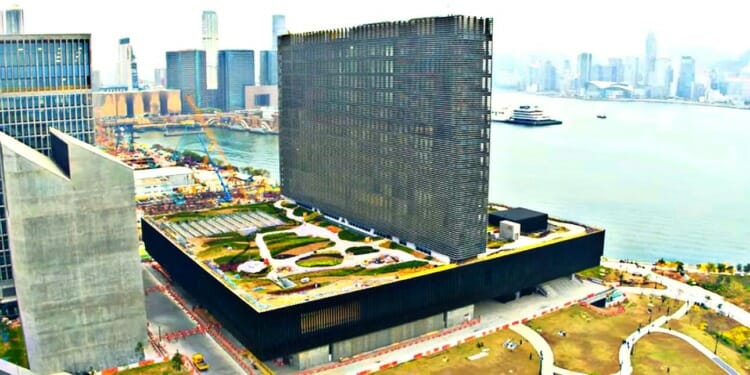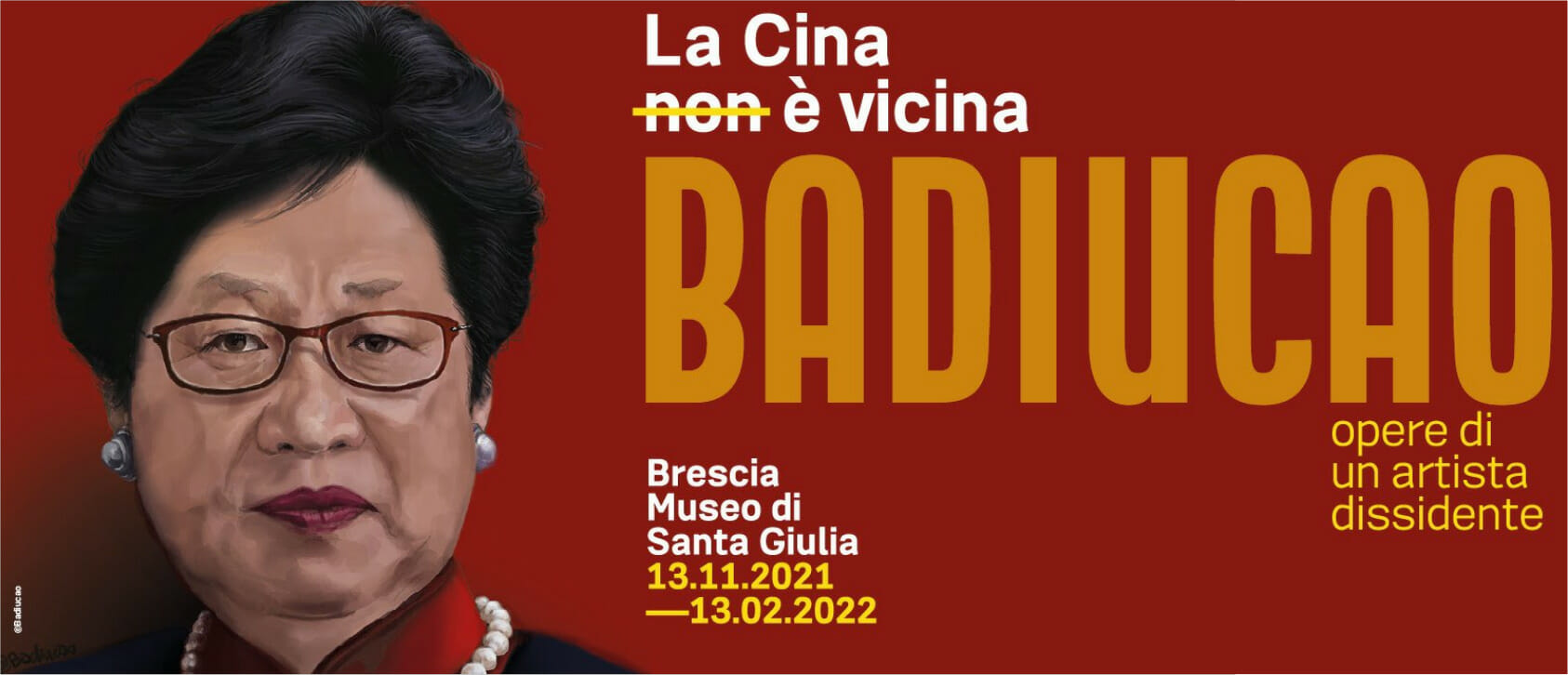This weekend, as COP26 folded with a less-than-satisfactory climate pact, another battle, much less noticed but just as contentious opened up on the human rights front as Chinese dissident art was exhibited in two outstanding venues around the world, in a new museum in Hong Kong, and in a major gallery in Italy.
On Friday 12 November, Hong Kong saw the opening of its new modern art museum called M+, with ambitions going well beyond its sober name as it aims to rival London’s Tate Modern, Paris’ Centre Pompidou and New York’s Museum of Modern Art. The project billed as “Asia’s premier visual art institution”, suffered many delays (it was supposed to open in 2017). In the end, it took two decades and reportedly a billion dollars to bring to fruition, gathering on the way – thanks in part to the generous donation of Swiss collector and former diplomat Uli Sigg – the largest collection of modern and contemporary Chinese art in the world.
The museum, located in the heart of Hong Kong’s West Kowloon Cultural District, displays its collections across 33 galleries housed in a vast inverted T-shaped structure nearly twice as large as the Tate Modern. Designed by Herzog & de Meuron, the renowned Swiss architectural firm that built London’s Tate Modern and the “Bird’s Nest” National Stadium in Beijing, the M+ museum is intended to showcase Asian art for an Asian audience.
In the words of the Chinese Digital Times: M+ is meant to provide an Asian perspective “unmediated by the contemporary art world’s dominant Western lens”. And admission will be free for the first year, after which tickets will cost 120 Hong Kong dollars ($15) for adults.
The 8,000+ pieces of modern Chinese art include famous dissident work like Ai WeiWei’s 1997 photograph of a middle finger raised in the foreground of Tiananmen Square. Earlier this year, there was an uproar when the image was removed from the museum’s website where users can browse through items in its collections. However other images from his “Study in Perspectives” series, showing him making the same gesture towards the “Mona Lisa” in the Louvre, the White House, the Trump Tower, and the Federal Palace of Switzerland can still be viewed.
And a reminder that it seems to have been lost on the DAB sycophants who criticized M+ for Ai Weiwei’s “Study of Perspective” that the series includes him “flipping the bird” not only at Tiananmen but also at numerous buildings symbolic of power in the West… pic.twitter.com/1108SZ7WtP
— Antony Dapiran (@antd) November 13, 2021
As a result, when the museum opened, it was universally seen as a test of the limits of the new National Security Law designed to clamp down on free speech and silence political dissent everywhere, including of course, in art. Many wondered how far the museum curators would dare to go in flaunting Chinese president Xi Jinping’s well-known and long-standing restrictions on art and artists, driving many of them away from China.
The Chinese President memorably addressed a symposium in Beijing in 2014, telling some of the country’s “most renowned” authors, actors, scriptwriters, and dancers, that works of art should present patriotism as the main theme and promote “correct” viewpoints of history, nationality and culture, as well as strengthen pride in being Chinese.
The question on everyone’s mind was: How much of Ai Weiwei’s work would be shown? And more broadly, how much would the curators auto-censor themselves? The assumption was they wouldn’t go so far as to negate for the museum its avowed role as the epicenter of Asian contemporary art.
Henry Tang, the chairman of the West Kowloon Cultural District Authority, which oversees M+, told the press during a media preview of the museum: “The opening of M+ does not mean that artistic expression is above the law. It is not.”
In the event, and perhaps unsurprisingly, Ai Weiwei’s photo with the raised finger was not on display. But two of his works were shown: an installation of his earthenware jars and a 2004 video capturing Beijing’s Chang’an Boulevard. And most of Mr. Uli Sigg’s collection of the works of some 310 artists (minus the 26 from Ai Weiwei) was on view to the delight of visitors.
Chinese dissident artists cannot be stopped: Badiucao carries to Europe criticism of the government
From the other side of the world, the news was more encouraging: Italian authorities engaged in organizing a Chinese dissident’s art exhibition in Italy had successfully stood up to Chinese pressure. The Chinese Embassy in Rome had sent an official letter to the Mayor of Brescia where the exhibition was to be held, with reportedly “veiled economic threats”, referring to Italy’s trade with China.
But the exhibition opened as planned on Saturday 13 November, at the Brescia Museum of Santa Giulia, the day after M+ opened in Hong Kong. Here too Chinese dissident art was featured, with the work of another famous Chinese dissident artist, a former assistant of Ai Wei Wei and contributing cartoonist for the China Digital Times, who goes by the pseudonym of Badiucao. And in early years, Badiucao had even taken to wearing a mask in public to maintain his anonymity and protect his family from the Chinese government’s threat and retortion measures.
The Brescia exhibit which runs until February 13, comes at the right time for Badiucao who had attempted in 2018 a solo show in Hong Kong but found it canceled as a result of political pressure.“Because my art is always focusing on human rights issues in China … it makes me almost the type of No. 1 enemy,” Badiucao explained. “They hunt me down. They harass me, harass my family, threaten the people working with me constantly. So that is why, for me, it is really hard to actually have an exhibition in an established gallery, a museum like this.” The 35-year-old artist currently lives in exile in Australia.
The exhibition is a retrospective of Badiucao’s artistic career from the beginning to the most recent works created in response to the COVID-19 pandemic. The centerpiece is a torture chair on which he will sit, reading diaries from Wuhan residents – 100 days of records – from the city where the pandemic started and where Chinese authorities famously attempted to hide the Covid news.
As explained in the above video, the Chinese artist who has been living in hiding for many years is not happy to be compared to the mysterious Banksy, pointing out the simple fact that the UK government is not likely to pursue him. Unsurprisingly, the Chinese Embassy in Italy has (again!) requested that the show be canceled.
Chinese authorities may not be happy but the “show must go on”, and very likely, it will. Art cannot be stopped, as the Soviet Union discovered in the 1970s when it was faced with a thriving community of dissident artists in Moscow. The Soviet Union collapsed two decades later – not as a result of the artists’ work, to be sure, but dissident art heralded the coming collapse. China, take heed.
Editor’s Note: The opinions expressed here by Impakter.com columnists are their own, not those of Impakter.com. — In the Featured Photo: M+ museum against the Hong Kong skyline, screenshot from video presentation of the museum











